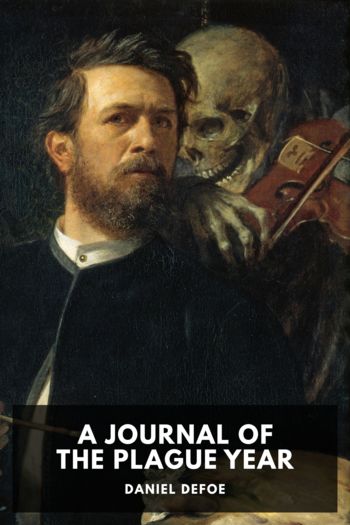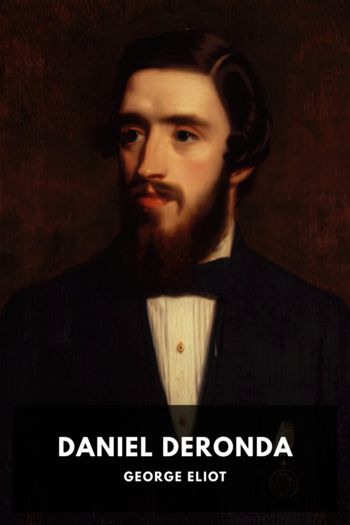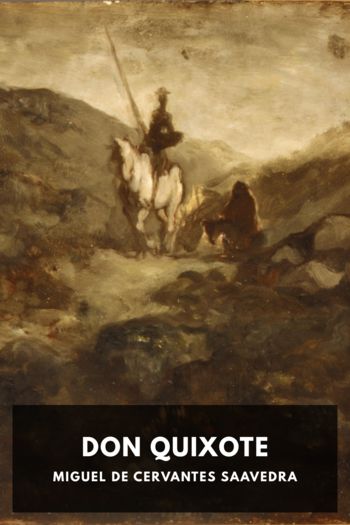A Journal of the Plague Year by Daniel Defoe (adult books to read txt) 📕

- Author: Daniel Defoe
Book online «A Journal of the Plague Year by Daniel Defoe (adult books to read txt) 📕». Author Daniel Defoe
2. A piece of ground just over the Black Ditch, as it was then called, at the end of Holloway Lane, in Shoreditch parish. It has been since made a yard for keeping hogs, and for other ordinary uses, but is quite out of use as a burying-ground.
3. The upper end of Hand Alley, in Bishopsgate Street, which was then a green field, and was taken in particularly for Bishopsgate parish, though many of the carts out of the city brought their dead thither also, particularly out of the parish of St. All-hallows on the Wall. This place I cannot mention without much regret. It was, as I remember, about two or three years after the plague was ceased that Sir Robert Clayton came to be possessed of the ground. It was reported, how true I know not, that it fell to the king for want of heirs, all those who had any right to it being carried off by the pestilence, and that Sir Robert Clayton obtained a grant of it from King Charles II. But however he came by it, certain it is the ground was let out to build on, or built upon, by his order. The first house built upon it was a large fair house, still standing, which faces the street or way now called Hand Alley which, though called an alley, is as wide as a street. The houses in the same row with that house northward are built on the very same ground where the poor people were buried, and the bodies, on opening the ground for the foundations, were dug up, some of them remaining so plain to be seen that the women’s skulls were distinguished by their long hair, and of others the flesh was not quite perished; so that the people began to exclaim loudly against it, and some suggested that it might endanger a return of the contagion; after which the bones and bodies, as fast as they came at them, were carried to another part of the same ground and thrown all together into a deep pit, dug on purpose, which now is to be known in that it is not built on, but is a passage to another house at the upper end of Rose Alley, just against the door of a meetinghouse which has been built there many years since; and the ground is palisadoed off from the rest of the passage, in a little square; there lie the bones and remains of near two thousand bodies, carried by the dead carts to their grave in that one year.
4. Besides this, there was a piece of ground in Moorfields; by the going into the street which is now called Old Bethlem, which was enlarged much, though not wholly taken in on the same occasion.6
5. Stepney parish, extending itself from the east part of London to the north, even to the very edge of Shoreditch Churchyard, had a piece of ground taken in to bury their dead close to the said churchyard, and which for that very reason was left open, and is since, I suppose, taken into the same churchyard. And they had also two other burying-places in Spitalfields, one where since a chapel or tabernacle has been built for ease to this great parish, and another in Petticoat Lane.
There were no less than five other grounds made use of for the parish of Stepney at that time: one where now stands the parish church of St. Paul, Shadwell, and the other where now stands the parish church of St. John’s at Wapping, both which had not the names of parishes at that time, but were belonging to Stepney parish.
I could name many more, but these coming within my particular knowledge, the circumstance, I thought, made it of use to record them. From the whole, it may be observed that they were obliged in this time of distress to take in new burying-grounds in most of the out-parishes for laying the prodigious numbers of people which died in so short a space of time; but why care was not taken to keep those places separate from ordinary uses, that so the bodies might rest undisturbed, that I cannot answer for, and must confess I think it was wrong. Who were to blame I know not.
I should have mentioned that the Quakers had at that time also a burying-ground set apart to their use, and which they still make use of; and they had also a particular dead-cart to fetch their dead from their houses; and the famous Solomon Eagle, who, as I mentioned before, had predicted the plague as a judgement, and ran naked through the streets, telling the people that it was come upon them to punish them for their sins, had his own wife died the very next day of the plague, and was carried, one of the first in the Quakers’ dead-cart, to their new burying-ground.
I might have thronged this account with many more remarkable things which occurred in the time of the infection, and particularly what passed between the Lord Mayor and the Court, which was then at Oxford, and what directions were from time to time received from the government for their conduct on this critical occasion. But really the Court concerned themselves so little, and that little they did was of so small import, that I do not see it of much moment to mention any part of it here: except that of appointing a monthly fast in the city and the sending the royal charity to the relief of the poor, both which I have mentioned before.
Great was the reproach thrown on those physicians who left their patients during the sickness, and now





Comments (0)